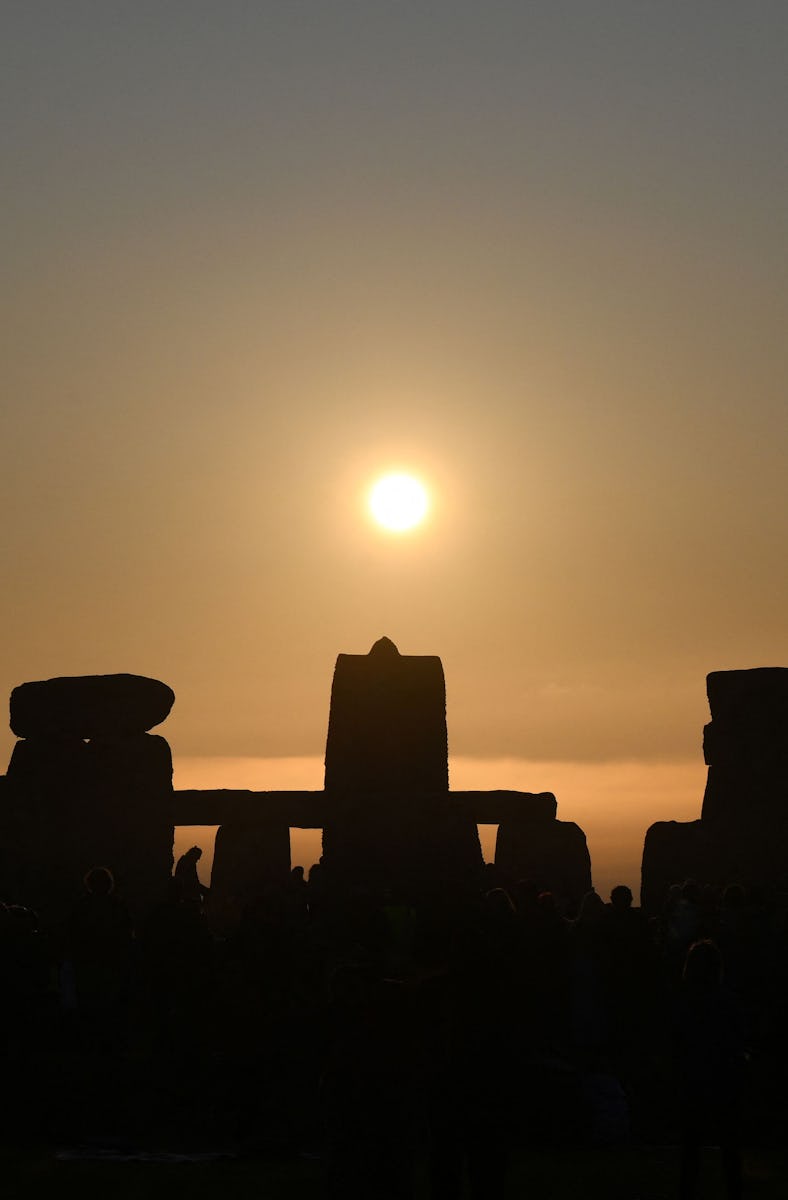Look: See Mars and Venus on the Summer Solstice
Usually the Summer Solstice is all about Earth and the Sun, but Mars, Venus, and the Moon are getting in on the action this year.

The Summer Solstice is one of the biggest celestial events of the year and a major turning point in the calendar, but there’s usually not much to see in the sky.
This year is different.
Earth, Mars, and Venus all happen to be on the same side of the Sun for this year’s Solstice, and you can see Mars and Venus in the night sky very close to the slowly brightening crescent Moon. Low on the western horizon, just after twilight, you can find the waxing crescent Moon in a triangle with bright white Venus and dim red Mars. And the parts of the Moon that are usually dark and hidden by lunar night will glow with an eerie light which Leonardo DaVinci studied during the 1500s.
TOPSHOT - The sun rises at Stonehenge, near Amesbury, in Wiltshire, southern England on June 21, 2023, during the Summer Solstice festival, which dates back thousands of years, celebrating the longest day of the year when the sun is at its maximum elevation. The stone monument -- carved and constructed at a time when there were no metal tools -- symbolises Britain's semi-mythical pre-historic period, and has spawned countless legends. (Photo by Daniel LEAL / AFP) (Photo by DANIEL LEAL/AFP via Getty Images)
When Earth Lights Up the Lunar Night
Look closely at the crescent Moon, and you’ll notice a dim outline of the Full Moon. Historical sources call this “the old Moon in the new Moon’s arms” or describe it as an “ashen glow,” and today it’s usually called Earthshine. What you’re actually seeing is sunlight reflecting off clouds in Earth’s atmosphere — only to reflect again off the surface of the Moon, casting a faint ghostly glow.
If you were standing on the Moon as the long lunar night began to fall, you’d see Earth glowing in the night sky the way a full Moon lights up the night here on Earth — but about 50 times brighter. Future Artemis crews will actually get to experience that view someday; astronauts on the Apollo missions came and went during the two-week-long lunar day, so they never saw a lunar night, much less the glow of Earthshine.
A small telescope or a good pair of binoculars can give you a better view of the night-shrouded part of the lunar surface, bathed in Earthshine. Look right along the terminator — the boundary between the daylit and dark portions of the Moon — for the best view of mountains and craters on the Moon’s surface, thrown into sharp relief by lunar twilight shadows.
There’s one more chance to catch the alignment between our three nearest celestial neighbors on Thursday evening. The Moon will be slightly brighter, which may make Mars a bit harder to spot, but Venus should still be clearly visible, and Earthshine should still be casting its pale light on the dark lunar surface.